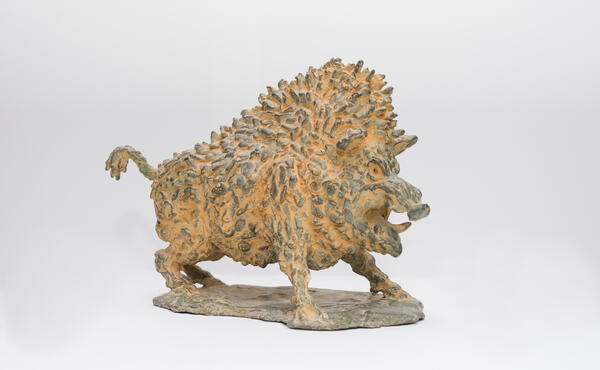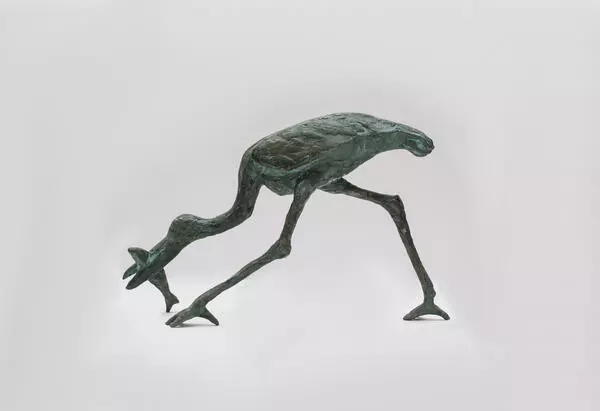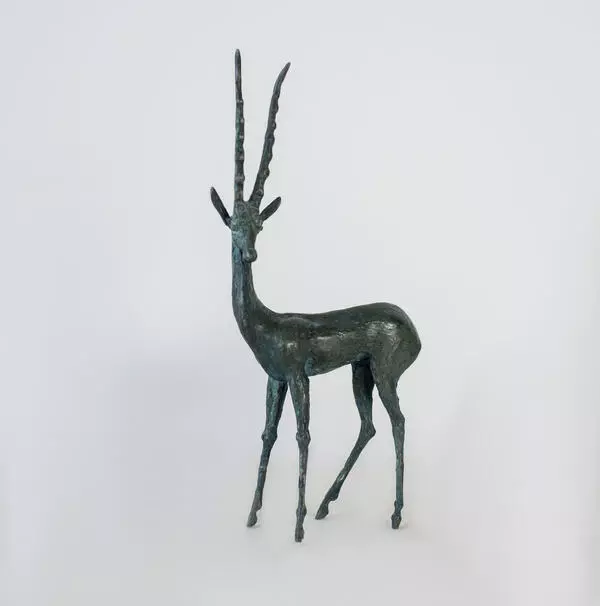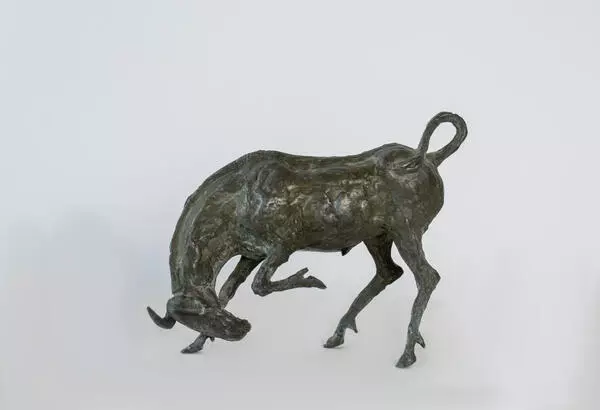The Volzhsky Art Gallery displays a metal sculpture “Wild Boar” by sculptor Andrey Martz. The wild boar, or a wild swine, is an even-toed ungulate animal within the Suidae family. In Russian, it is called a vepr — meaning an adult male boar with powerful lower canine teeth.
Different subspecies of wild boar live all throughout Eurasia and adjacent islands — from the dark coniferous taiga to the deserts. They are also found in all mountain ranges, including the European Alps, where there is little vegetation and the average annual temperature is below zero.
Boars usually prefer swampy areas, wooded or overgrown with reeds and shrubs. The boar has poor eyesight, does not distinguish colors, and cannot see a person standing 15 meters away from it. But it has a good sense of smell, taste, and hearing.
The boar is cautious but not cowardly: when it is irritated, wounded, or protecting piglets, it is recklessly brave and very dangerous because of its strength. It can stab with its canine teeth or trample down its opponent.
An encounter with an angry wild boar is one of the most dangerous situations a person can get into in the woods. Knives and stones are useless against it, and an inaccurate shot will anger it even more. The best way to avoid a direct encounter with a boar is to climb a tree which it cannot dig up with its tusks.
Andrey Martz depicted a boar in a defensive position, ready to attack its opponent. It crouches and opens its mouth, the fur on the back of its neck and along the spine is raised. The artist managed to convey the power and strength of the wild animal, as well as its character and instincts.
Animalier Andrey Martz graduated from the Faculty of Sculpture of the Surikov Moscow Art Institute in 1952, and in 1956, he took part in an exhibition for the first time. In 1958, Martz became a member of the Artists’ Union of the USSR. Since 1964, the Kusa Foundry and Machine-Building Plant and Kasli Plant of Architectural and Artistic Casting mass-produced sculptures based on his models: “Lying Foal”, “Deer”, “Antelope”, “Wild Boar”, “Zebras” “Horse”, “Gazelle”, “Peacock”, “Rhino”, “Running Sheep”, “Lying Antelope” and others.
Andrey Martz participated in regional, All-Russian, All-Union, and international exhibitions since 1966. In 1983, the sculptor was awarded the title of Honored Artist of the Russian Soviet Federative Socialist Republic, and in the same year, he was awarded a diploma of the Academy of Arts of the USSR. In 2000, two years before his death, Andrey Martz was elected as an associate member of the Russian Academy of Arts.
Different subspecies of wild boar live all throughout Eurasia and adjacent islands — from the dark coniferous taiga to the deserts. They are also found in all mountain ranges, including the European Alps, where there is little vegetation and the average annual temperature is below zero.
Boars usually prefer swampy areas, wooded or overgrown with reeds and shrubs. The boar has poor eyesight, does not distinguish colors, and cannot see a person standing 15 meters away from it. But it has a good sense of smell, taste, and hearing.
The boar is cautious but not cowardly: when it is irritated, wounded, or protecting piglets, it is recklessly brave and very dangerous because of its strength. It can stab with its canine teeth or trample down its opponent.
An encounter with an angry wild boar is one of the most dangerous situations a person can get into in the woods. Knives and stones are useless against it, and an inaccurate shot will anger it even more. The best way to avoid a direct encounter with a boar is to climb a tree which it cannot dig up with its tusks.
Andrey Martz depicted a boar in a defensive position, ready to attack its opponent. It crouches and opens its mouth, the fur on the back of its neck and along the spine is raised. The artist managed to convey the power and strength of the wild animal, as well as its character and instincts.
Animalier Andrey Martz graduated from the Faculty of Sculpture of the Surikov Moscow Art Institute in 1952, and in 1956, he took part in an exhibition for the first time. In 1958, Martz became a member of the Artists’ Union of the USSR. Since 1964, the Kusa Foundry and Machine-Building Plant and Kasli Plant of Architectural and Artistic Casting mass-produced sculptures based on his models: “Lying Foal”, “Deer”, “Antelope”, “Wild Boar”, “Zebras” “Horse”, “Gazelle”, “Peacock”, “Rhino”, “Running Sheep”, “Lying Antelope” and others.
Andrey Martz participated in regional, All-Russian, All-Union, and international exhibitions since 1966. In 1983, the sculptor was awarded the title of Honored Artist of the Russian Soviet Federative Socialist Republic, and in the same year, he was awarded a diploma of the Academy of Arts of the USSR. In 2000, two years before his death, Andrey Martz was elected as an associate member of the Russian Academy of Arts.







